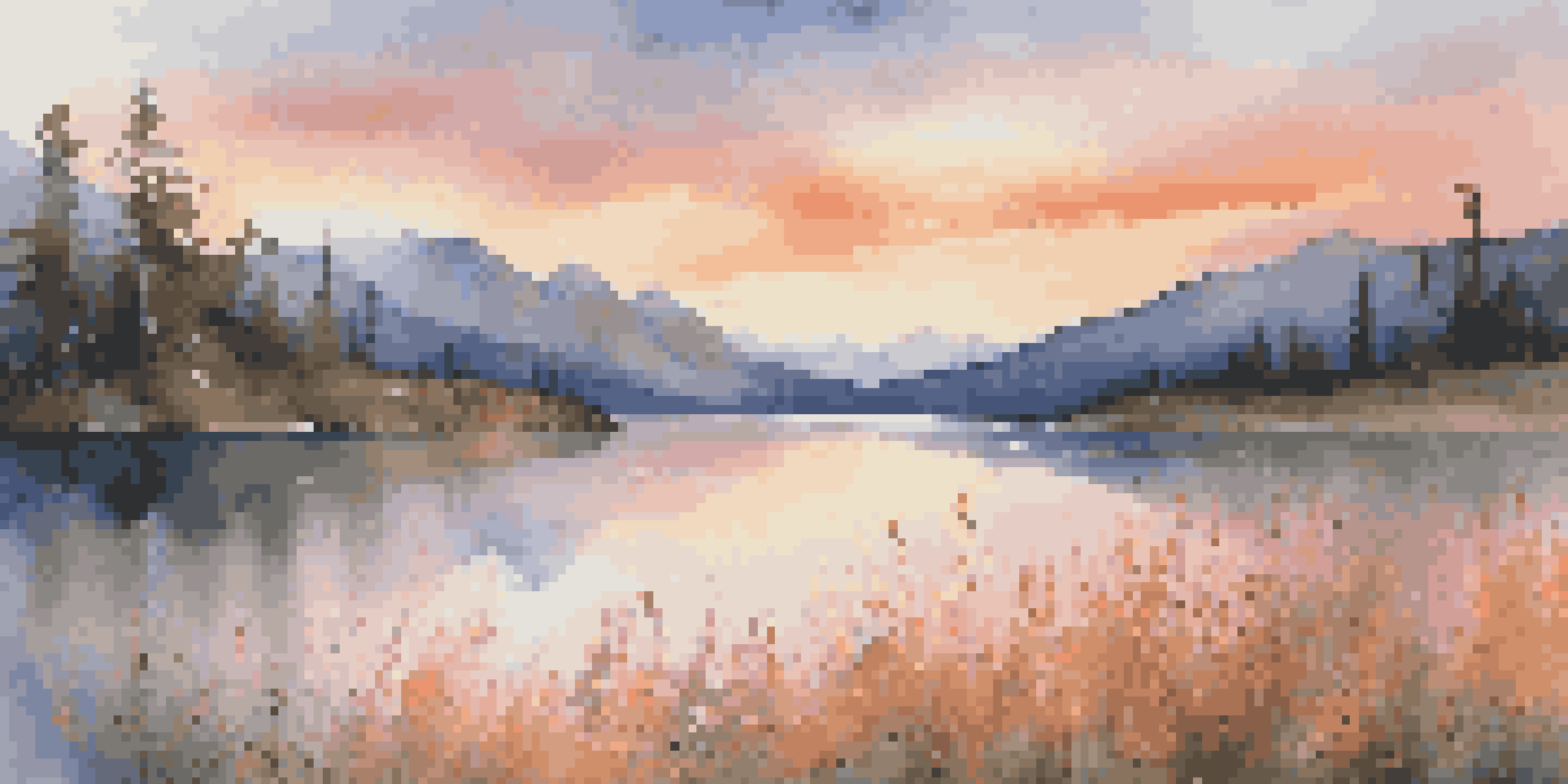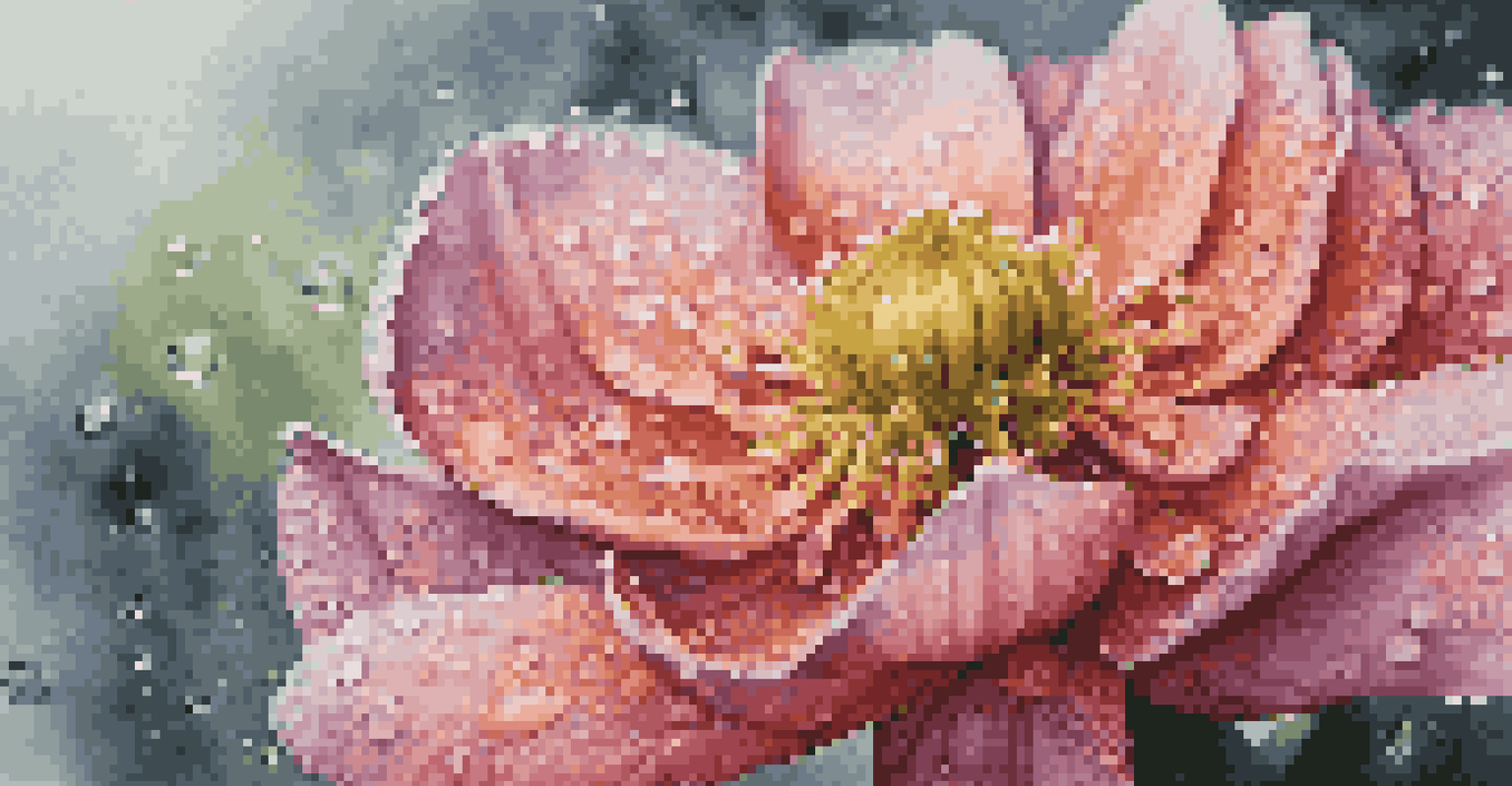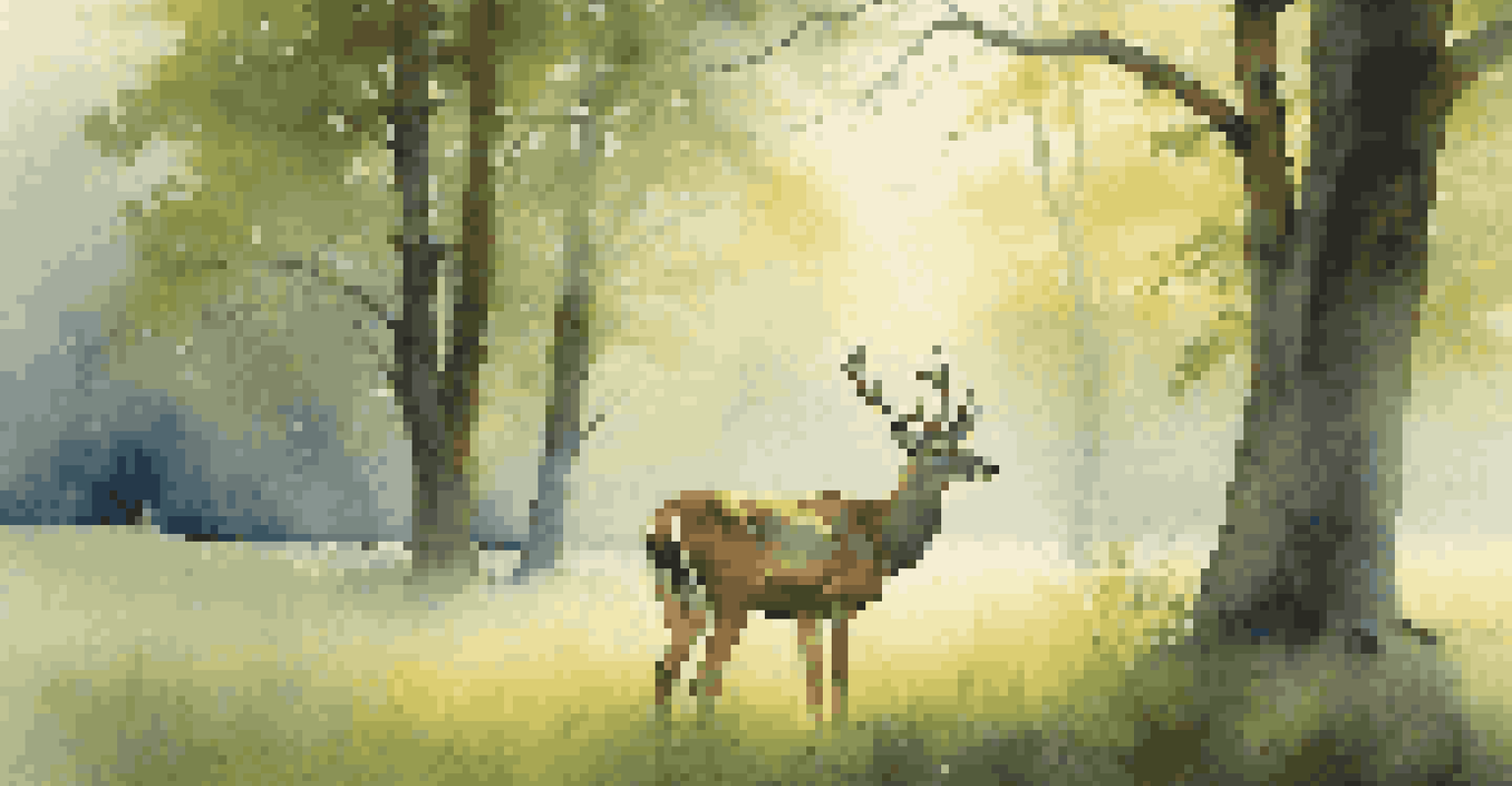Outdoor Photography Tips for Capturing Nature's Beauty

Choose the Right Time of Day for Stunning Light
The golden hour, which occurs shortly after sunrise and before sunset, is a photographer's dream. The soft, warm light during these times adds a magical quality to your images, enhancing colors and reducing harsh shadows. If you're looking to capture the beauty of landscapes or wildlife, plan your outings around these periods.
Photographing a scene is not just about capturing an image; it’s about capturing the essence of a moment.
Midday light, on the other hand, can be quite harsh and unflattering. If you find yourself shooting during this time, consider finding shaded areas or using reflectors to soften the light. This can help in capturing details without the stark contrasts that midday sun often creates.
Cloudy days can also provide excellent lighting conditions for photography. The overcast sky acts as a natural diffuser, providing even light that brings out the details in your subjects without the harsh glare. So, don’t shy away from grabbing your camera just because the sun isn’t shining!
Understand Composition to Tell a Story
Composition is the backbone of photography; it helps you frame your subject in a way that tells a story. A popular rule to follow is the 'Rule of Thirds,' which involves dividing your image into nine equal parts and placing the main subject along these lines or at their intersections. This technique creates balance and draws the viewer’s eye.

Another powerful composition technique is leading lines. Use natural elements like paths, rivers, or tree lines to guide the viewer’s eye into the scene. This not only adds depth but can also create a sense of journey, making your photograph more engaging.
Capture Stunning Light Conditions
Utilizing the golden hour and overcast days can dramatically enhance the quality and mood of your outdoor photographs.
Don't forget to experiment with different perspectives and angles. Sometimes, getting low to the ground or finding a higher vantage point can transform an ordinary scene into something extraordinary. The key is to be playful and creative with your compositions.
Utilize Natural Elements for Unique Framing
Nature is full of elements that can be used to frame your subject creatively. Trees, branches, and flowers can act as natural frames, drawing focus to your main subject while adding depth to the image. This technique not only enhances visual interest but also creates a more immersive experience for the viewer.
The best camera is the one you have with you.
Look for opportunities to incorporate foreground elements into your shots. By including something in the foreground, like a rock or wildflower, you can create a layered effect that adds intrigue and context to your photographs. It helps to convey the vastness of the environment and gives the viewer a sense of place.
Remember, framing doesn’t have to be perfect. Sometimes, asymmetrical framing can create a more dynamic composition that captures attention. So, keep your eyes open for spontaneous opportunities as you explore the outdoors.
Master Your Camera Settings for Optimal Results
Understanding your camera settings is crucial for capturing stunning outdoor photographs. Familiarize yourself with key settings like aperture, shutter speed, and ISO. For instance, a wider aperture (smaller f-number) can create that beautiful background blur while letting in more light, perfect for portrait shots in nature.
Don’t underestimate the power of manual mode. While automatic settings are convenient, manual control allows you to adjust each setting to fit the specific lighting conditions and your creative vision. It may seem daunting at first, but the control you gain is well worth the effort.
Master Composition Techniques
Applying principles like the Rule of Thirds and leading lines can help you tell a compelling story through your images.
Finally, consider using tools like histograms and exposure meters to analyze your shots as you go. These tools can help you identify if your images are overexposed or underexposed, allowing you to make necessary adjustments on the fly. This will enhance the quality of your photographs significantly.
Embrace the Weather for Unique Shots
Weather can be your best friend or your worst enemy, but embracing it can lead to extraordinary photographs. Rain, fog, and even snow can add drama and mood to your images that sunny days simply can’t compete with. Don't hesitate to head out when the skies are gray; you might capture something truly unique.
For example, capturing a landscape during a light drizzle can result in vibrant colors and dramatic clouds. Water droplets can add texture to your shots, making them more visually appealing. Just be sure to protect your gear from the elements with appropriate coverings.
Moreover, consider how weather can affect lighting. Overcast days often yield soft, diffused light that's perfect for close-ups of flowers or wildlife. Use these conditions to your advantage to create images that stand out from the typical sunny-day captures.
Incorporate Wildlife for Lively Compositions
Including wildlife in your outdoor photography can bring your images to life. Whether it’s a bird in flight or a deer grazing in a meadow, capturing these moments adds an element of dynamism and interest. Patience is key here; sometimes, you might need to wait quietly to catch that perfect shot.
When photographing wildlife, it’s important to maintain a respectful distance. Use a telephoto lens to capture details without disturbing the animals. This not only ensures their safety but also allows you to capture more natural behaviors, resulting in more compelling images.
Embrace Weather for Unique Shots
Weather conditions such as rain or fog can add drama and texture to your photos, creating stunning and memorable images.
Lastly, learn about the habits of the wildlife in your area. Understanding when and where to find certain animals can greatly improve your chances of capturing them. Whether it’s dawn for birds or dusk for deer, knowing their patterns allows you to plan your shoots effectively.
Edit Thoughtfully to Enhance Your Photos
Editing is an essential part of the photography process that can take your images from good to great. Start with basic adjustments like cropping, straightening, and brightness to enhance the overall composition. A little tweaking can make a world of difference in how your photograph is perceived.
Consider using editing software that allows for non-destructive editing. This means you can make changes without permanently altering the original image, giving you the freedom to experiment. Programs like Adobe Lightroom and Photoshop are popular choices for photographers wanting to refine their work.

Remember, while editing can enhance your images, it’s essential to maintain the natural beauty of your subjects. Aim for a balance between enhancing colors and keeping them true to life. The goal is to complement what you’ve captured, not to create something entirely different.